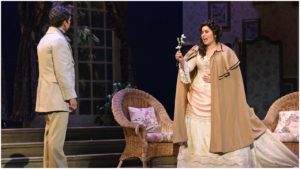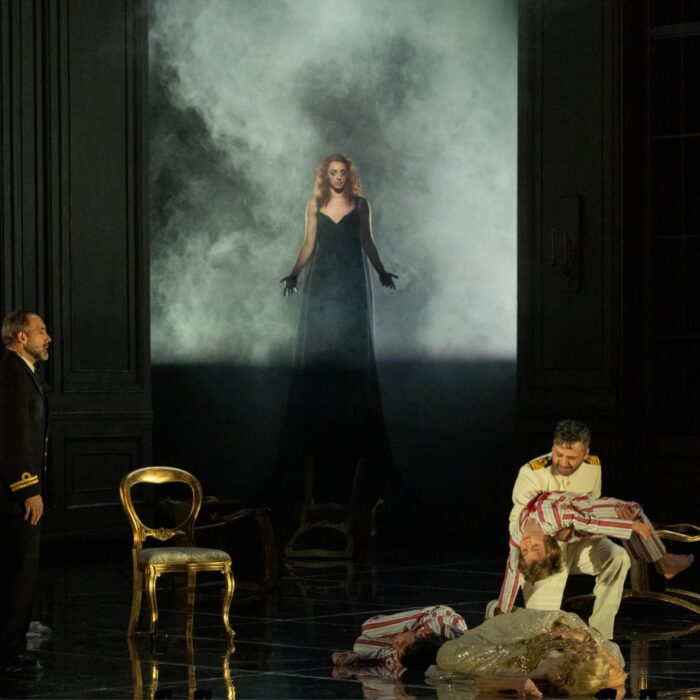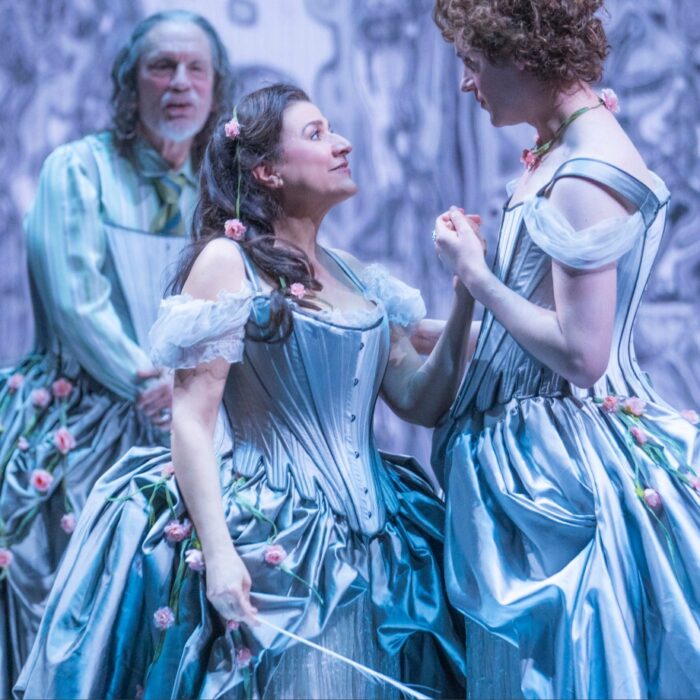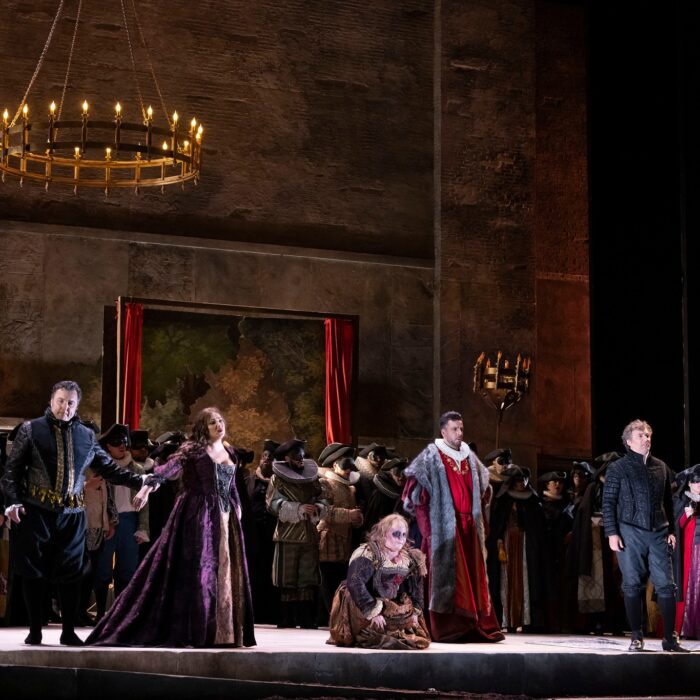
Arizona Opera 2018-19 Review: La Traviata
Vanessa Vasquez Sings Heartrending Violetta in Phoenix
By Maria NockinOn January 25, 2019, Arizona Opera presented Giuseppe Verdi’s opera of love and death, “La Traviata” at the Phoenix Symphony Hall—a perfect vehicle for the debut of 2017 Metropolitan Opera National Council Auditions Winner Vanessa Vasquez.
Currently a recent graduate of the Academy of Vocal Arts in Philadelphia, Vasquez gave each note a beginning, a middle and a well planned end. Each phrase could be lyrical or dramatic depending on the character’s situation because she acted with her voice as well as her body. Arizona Opera patrons discovered a treasure last night.
Veristic Effect
Stage director Stephanie Havey treated the story of the courtesan with veristic realism. When Violetta asked Alfredo’s father for an embrace to give her strength, she grabbed him emotionally but he remained stiff. When Alfredo realized that his father had chased away his lover, he pounded forcefully on the elder man’s chest. This opera evokes strong emotion and Havey used it most effectively.
The scenery, created by Peter Dean Beck for Florida Grand Opera, reflected the opulence of 19th century wealth, with whites in the first act, the colors of nature in the second, and shades of light and dark red at Flora’s Mardi Gras party. The basis of the set was a corner of a room and it never changed, except that the curtains, wall coverings and furnishings were different for each scene. Gregory Allen Hirsch designed the lighting that added shadows and a bit of mystery to Beck’s scenery. Costumes by an unnamed designer fit perfectly into each locale. Violetta’s dresses for Acts one and two were light but she wore black to Flora’s Act three party. The menswear was in keeping with the time and place.
When the curtain rose at the beginning of the overture, the audience saw Violetta lying on a chaise longue. Two dancers clad in red and black danced lyrical solos and then performed an intricate pas de deux exploring a life-relationship between two people to Molly Lajoie’s thought-evoking choreography.
In Complete Command
Vasquez commanded the coloratura needed to perform the first act of this opera. She sang the lyrical phrases of “Ah fors’e lui,” as well as the triplets and the difficult run of the cabaletta “Sempre libera,” as though they were simple lines. After she sent Alfredo away, Havey had her drink wine from a bottle as she thought of leaving her profession as a courtesan to love only one man. She drank more wine and her walk became less lady-like with each step until she exclaimed, “Follie” and exulted in the cabaletta “Sempre Libera.”
Her Act two duet with stentorian-voiced baritone Daniel Sutin was one of the highlights of the evening. Their two sizable voices easily surmounted and rode on top of Joseph Rescigno’s formidable orchestra of more than 50 pieces, creating a spine-tingling effect. At Flora’s party, Violetta was no longer the proud courtesan – she had become a desperate woman who lost her lover. When Violetta read the elder Germont’s letter in the last act, Vasquez gripped the audience in the palm of her hand as she sang her disconsolate good-bye to the past.
The reason Violetta’s death is so heartbreaking is that she hopes for a reprieve up to the last moment. Vasquez had Violetta’s wedding dress lying on her bed as she sang of Alfredo’s imminent return and their joyous future. Annina opened the window to singing from below and Violetta’s lover arrived to take her away to the country. She tried to get up, sang of feeling stronger, then fell back dead. With a fine singing actress and a good stage director, this opera is true theater.
Sweet But Small; Strong & Sturdy
Tenor Daniel Montenegro was a sweet-voiced Alfredo whose tones were not at the same decibel level as those of Vasquez and Sutin. I wish conductor Rescigno had held the orchestra down more when the tenor sang. He rendered his Act two aria, “Deh miei bollenti spiriti,” with great energy and finely placed tones, but some of the important notes of its cabaletta, “O mio rimorso” were covered by the accompaniment.
As the elder Germont, Daniel Sutin was a strict pater familias who brooked no nonsense from his children. Only later when he realized how much pain he had caused his son did he soften his attitude toward Violetta. Vocally his voice was as strong and untiring as his character.
Bille Bruley and Daniel Prunaru were amusing as Gastone and the Marchese, while Jarrett Porter was a straight-laced Baron. Cadie Jordan was a caring Annina and Brandon Morales an efficient doctor who had seen many deaths from tuberculosis. As Flora, Katherine Beck was a gracious and sexy hostess. As Giuseppe, The Messenger and Flora’s Servant, Francisco Renteria, Christopher Herrera, and Greg Giuenther sang their small roles with aplomb.
Henri Venanzi’s chorus sang with great beauty of tone but were usually parked at one spot on the stage for each scene. It would have been nice if they could have functioned more as individual couples than as a group.
Joseph Rescigno led the Arizona Opera Orchestra in a virtuosic rendition of Verdi’s masterpiece that left the singers room to breathe and emote.
This was one of the best performances Arizona Opera has mounted lately and I hope it will help to grow opera audiences in Phoenix and Tucson.


